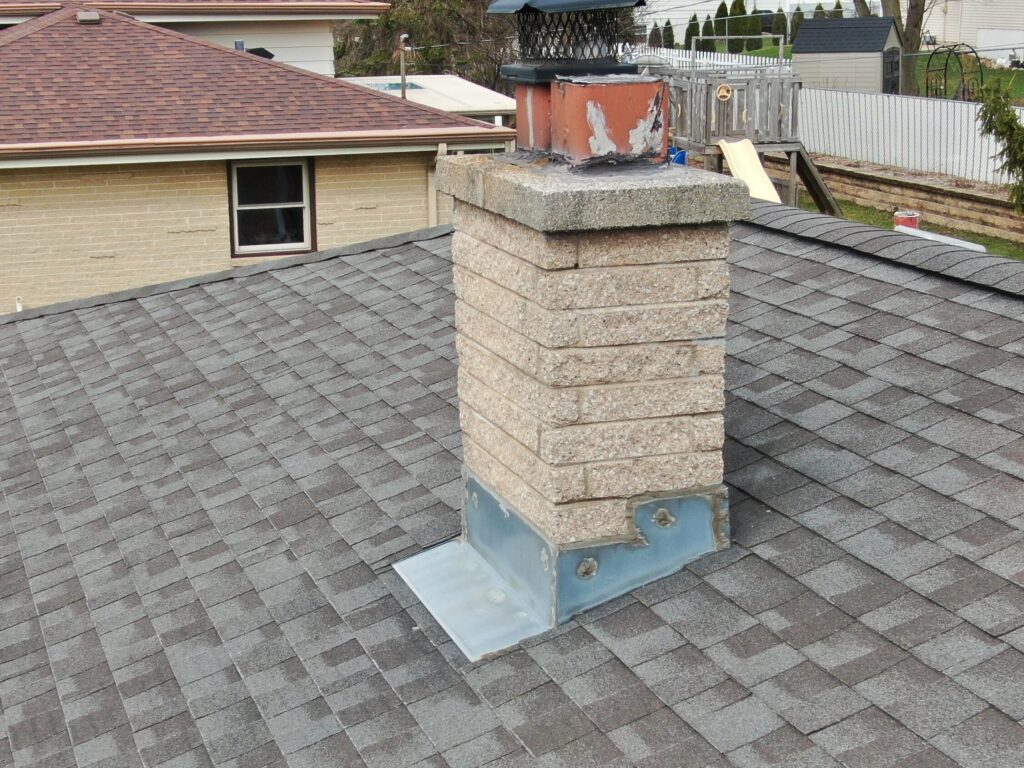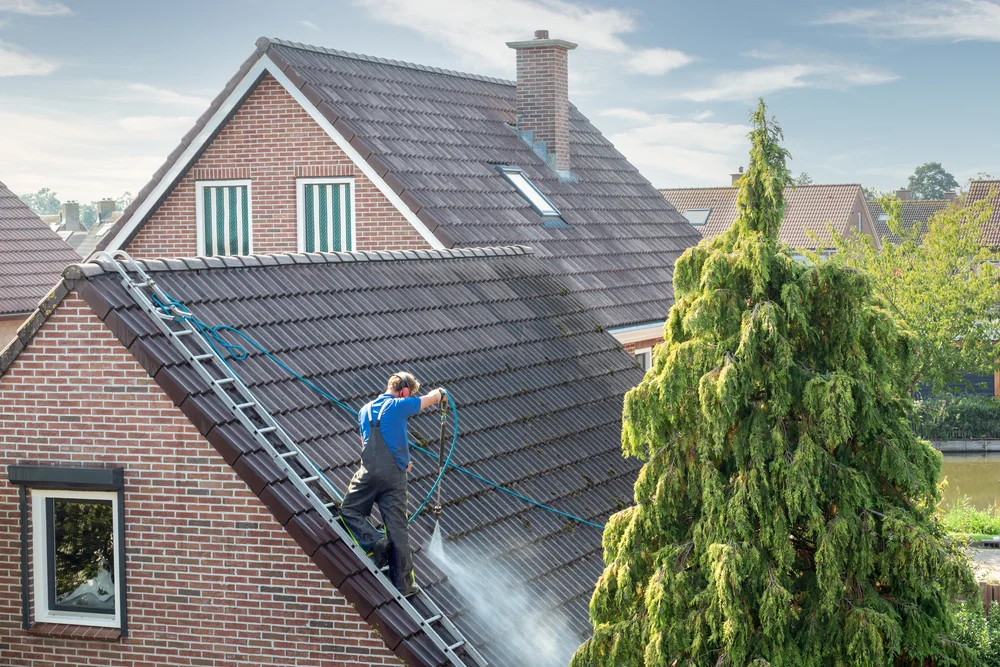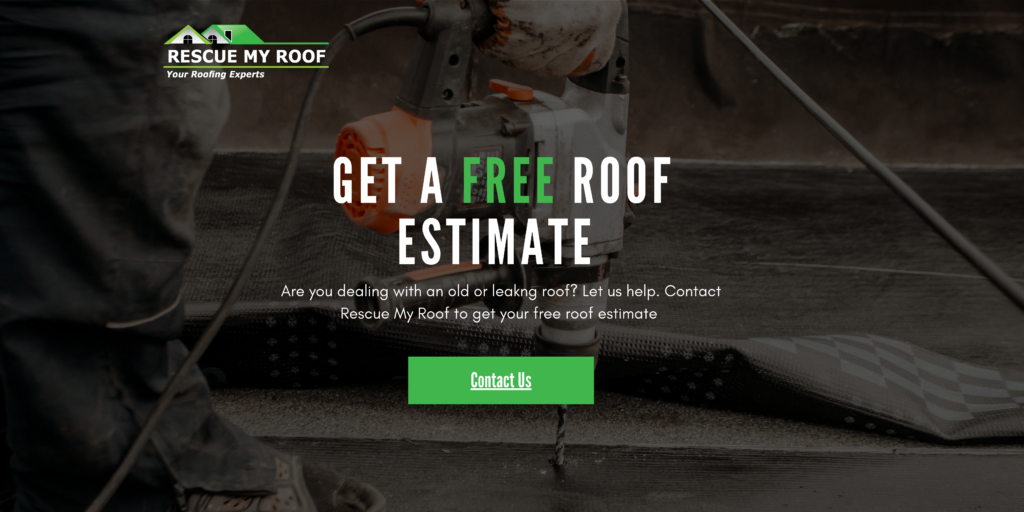How to Find A Roof Leak (4 Easy Steps)
A leaking roof can quickly become a homeowner’s nightmare, causing damage to the interior, weakening the structural integrity, and leading to costly repairs.
The hardest part of fixing a roof leak? A lot of times, it’s locating the problem. It’s easy to spot water stains on the ceiling, but once water has penetrated the roof, it can be diverted by things like insulation. So, even when you notice evidence of a leak, the vulnerable point of your roof may be in a different spot.
Finding the source of a roof leak is daunting, but with our easy approach, you can locate and address the issue before it worsens.
Rescue My Roof has worked with homeowners for over a decade, helping them keep their homes safe from leaks. That’s why we’re here to equip you with the knowledge to find a roof leak, repair it, and keep your home water damage-free.
In this article, we’ll guide you through the step-by-step process of identifying a roof leak and taking the necessary actions to prevent further damage. Ultimately, you’ll know what to do when you see signs of a roof leak.
4 Easy Steps to Find A Roof Leak
A roof leak is already frustrating – you want to avoid going on a wild chase to find where the leak is stemming from.
You can take a few easy steps to find a roof leak and begin the repair process. Here’s what you need to do:
1. Inspect the Attic

The attic is the best place to check once you believe you have a roof leak. The attic will display the biggest signs of a roof leak, like water stains and mold growth.
Arm yourself with a flashlight and head up to the attic. Use the flashlight to examine the underside of your roof, looking for darker areas (a.k.a. Water stains).
If it hasn’t rained recently, you may not be able to spot any signs of moisture. However, mold tends to linger. If you encounter mold, which thrives on moisture, chances are you’ve discovered your roof’s weak spot.
Additionally, if it’s actively raining, you may be able to hear the evidence of a leak. Keep an ear out for any sounds of dripping water.
2. Follow the Trail
Now that you’ve discovered the water damage in your roof, it’s time to follow the evidence leading to the active leak.
When looking for an active leak, you will notice more signs of water damage, mold, and deterioration in the affected area. Looking for areas that have deteriorated faster than others could tell you where the water is coming from.
Materials like insulation deteriorate more noticeably and quickly than wood does. If you see damage on one insulated section, the leak itself could be several feet to either side of the damage as the rainwater could be diverted from the source of the leak.
While wearing the appropriate protective gear, remove all insulation adjacent to the damaged area. You can follow the water’s path from the damaged area to its entry point.
3. Check Roof Penetrations

Most roof leaks stem from penetrations in the roof, like chimneys, vents, or even rogue nails. These areas are prone to leaking because they are more detailed areas. They are more challenging to install and easy for roofing contractors to mess up.
Additionally, these areas require water-proof seals that can weaken over time. If you notice rusted flashing or water pooling near the penetrations, you may have found the source of the leak.
However, leaks can also be caused by much smaller penetrations like nails. These can be more difficult to spot. If you spy any nail head protruding from the roof, that could also be a suspect.
The best way to determine where a roof leak is coming from is to call a roofing contractor. They can thoroughly inspect your roof, using their trained eyes and expertise to rule out all possible causes.
4. Make It Rain

If dry weather prevents you from finding a roof leak, you should make it rain.
Roofs only leak when there’s a water source like a storm. Fortunately, you can easily simulate a storm with a water hose.
This method requires two people: one to spray the roof with water and the other to inspect the attic. Section by section, spray down the roof while one person inspects the roof’s underside for leakage.
By simulating a downpour, you can witness firsthand how your roof withstands – or fails – conditions that mimic those of a natural storm.
What Should You Do if Your Roof is Leaking?
If you’ve found a roof leak, the best thing to do is to prevent as much damage as possible. Homeowners have several options to protect their homes from water damage.
The first way is to use a tarp. Laying a tarp over the affected areas of your roof can help prevent water from coming in and causing more damage. Secure a tarp with weights over the leaking section of the roof, or use a tarp in the attic to catch the dripping water.
Homeowners can also use buckets, towels, or bowls to try and collect the water dripping into your home.
It’s also crucial to move important items out of the way. To preserve your personal belongings, move them from the affected area and follow the above recommendations to contain the water.
It’s also essential to take photos for insurance documentation. Documenting the damages will be helpful when you file your home insurance claim.
Photos will show the severity of the roof damage and all other compromised items. If the roof leaks ruined items like televisions or computers, insurance could fix the roof and replace the items you lost.
How to Repair a Roof Leak: Call A Roofing Company
When facing a roof leak, you can tarp your roof, contain the water, and even relieve water pressure. However, the recommended step is to call a local roofing company to repair the leak.
Leaks can be hard to diagnose and difficult for an amateur to repair. Calling a roofing professional means your roof will get the best possible care.
If you want to get educated about roof leaks before calling a rescue team, here are more resources. Read “4 Places Where Roof Leaks Can Happen” and “How Much Does It Cost to Repair My Roof” to prepare for the day when you need a roof leak repaired.
If you’re located in Southeastern Wisconsin, Rescue My Roof may be the contractor for you. With over a decade of experience, we can rescue your roof from leaks. Contact us today to get a free estimate.


